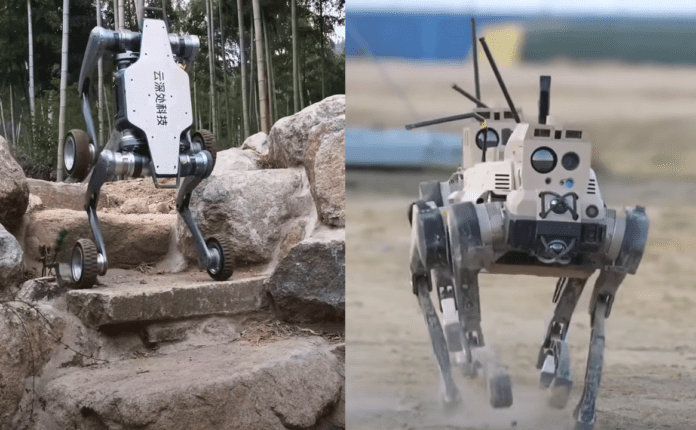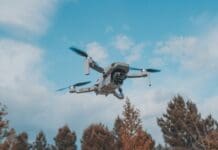This post is also available in:
 עברית (Hebrew)
עברית (Hebrew)
At this year’s Airshow China in Zhuhai, China South Industries Group Corporation (CSGC) unveiled its latest development in unmanned combat technology: a series of advanced quadrupedal robots, called “robo-wolves.” These robots, designed for military and emergency operations, have garnered significant attention for their impressive capabilities and innovative design.
According to Global Times, the robo-wolves are named that way because they can work in a group, addressing the need to create integrated cluster combat systems, combining multiple types of quadrupedal robots for tasks such as reconnaissance, transport, and even combat. These robots, which weigh 70 kilograms, are able to traverse complex and rugged terrains. They can walk alongside personnel, climb stairs, overcome obstacles, and perform in environments ranging from urban streets to caves and mountainous areas. The robo-wolves are capable of operating in coordinated groups, offering enhanced mobility and functionality for special operations forces and infantry detachments. A typical cluster system features a combination of reconnaissance, transport, and strike-type robots, all of which work autonomously and share information to enhance operational efficiency.
The robots are suitable for urban warfare, mine clearing, hostage rescue, border patrol and sniping missions. They can work continuously for three hours, either in a fully autonomous manner or remote-controlled from a 2 km radius. Equipped with a LIDAR sensor and a large camera, information is sent to the operator in real time so that the soldier can make informed decisions in combat while mitigating risk for their own life.
Not to be outdone, Deep Robotics, another Chinese company, introduced its high-speed quadruped robot, the Lynx, at the same event. This robot, designed with all-terrain wheels instead of solid feet, can perform agile maneuvers like jumping and back-flipping, making it ideal for rescue and search operations in hazardous environments. Used in real-world scenarios such as post-earthquake recovery, these robots have proven to be valuable tools for navigating tough terrains and assisting in emergency operations.
Both developments highlight China’s growing innovation in robotic and unmanned technologies, which promise to revolutionize both military and civilian applications.
Robo-Wolves:
Lynx:

























